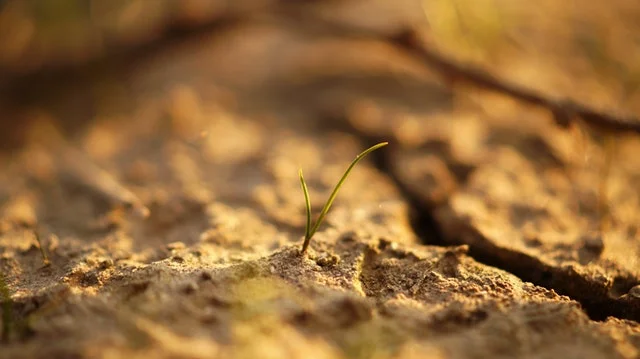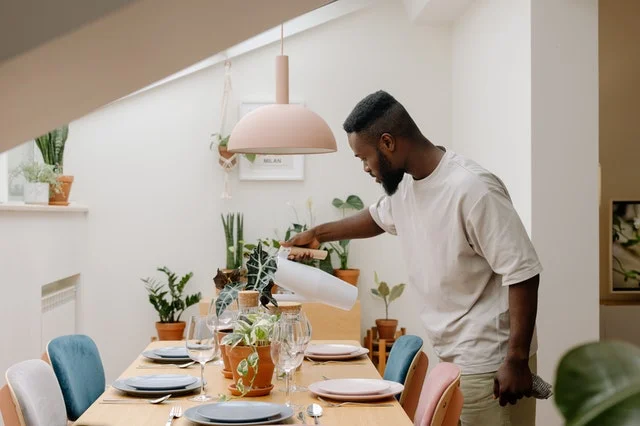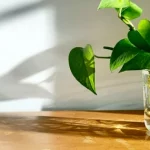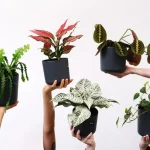When the leaf of your plant starts to wilt, this is a solid indicator that it needs to be watered. It is preferable to water just as it starts to wilt (rather than after it has collapsed), and constantly feel the soil as well as visually watch the plant.
Table of Contents
There are nine signs that your plant needs water.
The following are the nine signs that your plant needs water:
- Dry soil
- The pot is light.
- The plant seems to be drooping.
- The plant is leafing out
- The leaves have wrinkles on them.
- Browning leaf tips
- There is no growth in the plant.
- The plant is either dead or dying.
As a result of my constant harping on the subject of how overwatering is such a huge issue for plants. I’m beginning to worry that I’m deterring you from watering your plants entirely.
In order to understand the difference between over and under watering, it’s important to imagine it happening to real people.
In the media, we hear a lot about the dangers of going without water. In the best-case scenario, you’ll be OK for three days, but that’s about it.
However, if you compare that to the human counterpart of being overwatered, three days is a long time to endure being underwatered in the desert.
Do you have any idea how long a person can live underwater without the use of an external breathing device?
Navy Seals can only endure three minutes.
Significantly less than three days.
However, the principle remains: all life need the appropriate quantity of water to survive. I’ve spoken a lot about overwatering, but now it’s time to speak about underwatering.
Read More: Is misting good for pothos?
Your plant’s soil is very dry.

Despite the fact that I mention moisture meters on a regular basis, they are the most effective tool for teaching newbies when to water their plants.
It would be good if there was a common number to water at, but various plants originate from different regions of the globe, and they need different amounts of water at different stages of dryness, thus there is no global number.
You’ll depend less on your moisture meter as you get to know your plants, but they’re a gift for beginners. They are cheap on Amazon.
Your plant is light in weight.
The weight of water is great, thus there is a noticeable difference in weight between wet and dry plants. When you pick up a plant for the first time, you’ll soon learn how to identify whether it needs watering or not. That seems unbelievable, and I was skeptical as well, yet it is true.
Read More: How Often to water pothos in winter?
Your plant is wilting and drooping.
In general, if your plant is limp, looks a little pale, or droops, you may have overwatered it. If your plant looks sad only because it looks limp, it is probably thirsty. Again, moisture meters are really helpful in determining which it is, particularly if you are new to the world of plant motherhood.
Your plant is leafing out.
According to my observations, plants must be EXTREMELY DRY before they begin to drop their leaves. Leaf drop is more likely when plants are overwatered, so make sure you know which kind of overwatering you’re dealing with before proceeding.
When it comes to watering, waiting for the leaves to fall is too lengthy a wait. Watering should have begun as soon as the leaves began to wrinkle, rather than waiting until they crisped up and fell off the plant.
Read More: Can You Propagate Pothos Without Node?
The leaves on your plant are wrinkled.
Drought causes the leaves of succulent plants like hoya to wrinkle. Wrinkly leaves may also be seen on pothos and philodendrons..
If you are not using a moisture meter and you are not yet familiar with the pot weight concept, it is recommended that you wait until the leaves are wrinkled before watering.
Choosing plants that have succulent leaves tend to be more tolerant of underwatering than they are of overwatering, so waiting until their leaves are wrinkled might be a good method to ensure you aren’t overwatering them.
The leaves will regain their fullness rather fast.
Read More: Can You Put Pothos In Front Of A Window?
Leaves with brown tips
Crispy tips are often associated with a shortage of water, but they are more frequently associated with a requirement for increased humidity in your plant.
In the case of a large number of plants with several crispy tips, it is significantly more beneficial to invest in a humidifier.
A humidifier like the Levoit is regarded as the gold standard in the house plant world because of its capacity, ability to make warm mist, and medium price tag, but you may find cheaper alternatives.
Browning of leaves
There is a good chance that dryness is at blame if the leaves on your plant are turning brown, but you should also check for pests and germs. Insects will be visible beneath the leaves if you hold your plant up to a window and look under the leaves, particularly where the leaf joins the petiole. Bacteria are more likely to occur in clusters.
Before you water your plant, be sure that the soil is completely dry by using a moisture meter or your finger to check. Brown leaves might be an indication that root rot has developed to the point where your plant is dying, however root rot is generally accompanied by limp yellow leaves before the leaves turn brown and the plant dies as a result.
Your plant is unable to grow
To flourish, plants need a lot of light and water in order to survive. Succulents and cactus, among other plants, have a remarkable capacity for water storage, which is particularly true in the summer.
While it is true that they want their soil to be fully dry before planting, when the weather is hot, this may only take a few weeks. It’s also critical to provide your plant with enough water.
Check to see that the plant has been properly wet and that water is draining through the drainage hole before continuing. Clean out any remaining moisture in the saucer or drip tray before starting again. Repeat this process until the soil is fully dry.
Your plant withers and dies
A lot of people believe that overwatering is the most prevalent cause of plant death, however I strongly disagree with this. In the past, how many plants have been purchased at a gardening store and then left on a windowsill to wither and die?
It is true that plants will ultimately die if they are not watered on a consistent basis. Succulents are included. It merely takes them longer since their leaves and stems have more water stored in them.
But don’t assume your plant is dead until doing a comprehensive examination of its condition.
Conclusion
How Do I Know If My Pothos Needs Water?
I hope you find this list useful in recognizing thirsty plants. Purchase a moisture meter. To be honest, they make the whole procedure seem effortless. I’m well aware that they are not 100 percent correct, but they are much more accurate than my educated guesses when I was a plant novice.
Photo by cottonbro from Pexels
Photo by George Becker from Pexels



